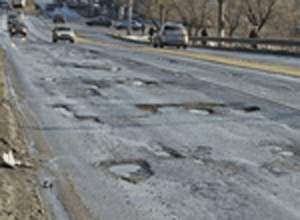
When winter cold freezes the water trapped in cracks in the road, the ice expands the cracks and breaks up the pavement. In the spring thaw, new words come to our mind to express our displeasure. We don’t like swerving to miss deep holes. We don’t enjoy the extra time to take an alternate route because the road is closed for repairs.
Readers are like spring drivers. They want the shortest, most direct path to their destinations. They don’t want to slow down, let alone have to back up or turn around.
Passive sentences move in reverse gear, the opposite direction from what readers prefer. Here’s a simple example of passive voice: The truck was driven by John to pick up six bags of cement mix. The subject of the sentence (truck) receives the action.
Active sentences move forward, which pleases readers. John drove his truck to pick up six bags of cement mix.
Consider arranging your phrases so readers move forward with the words in the same order that would naturally take place physically or logically. For example, John drove his new Cadillac to pick up six bags of cement mix because he couldn’t get his truck started. Grammatically, that’s a great sentence, but since John’s inability to get his truck started came before taking the Cadillac, this order might work better: Unable to get his truck started, John drove his new Cadillac to pick up six bags of cement mix.
Keep your words moving rapidly forward, and readers will want to ride with you.



